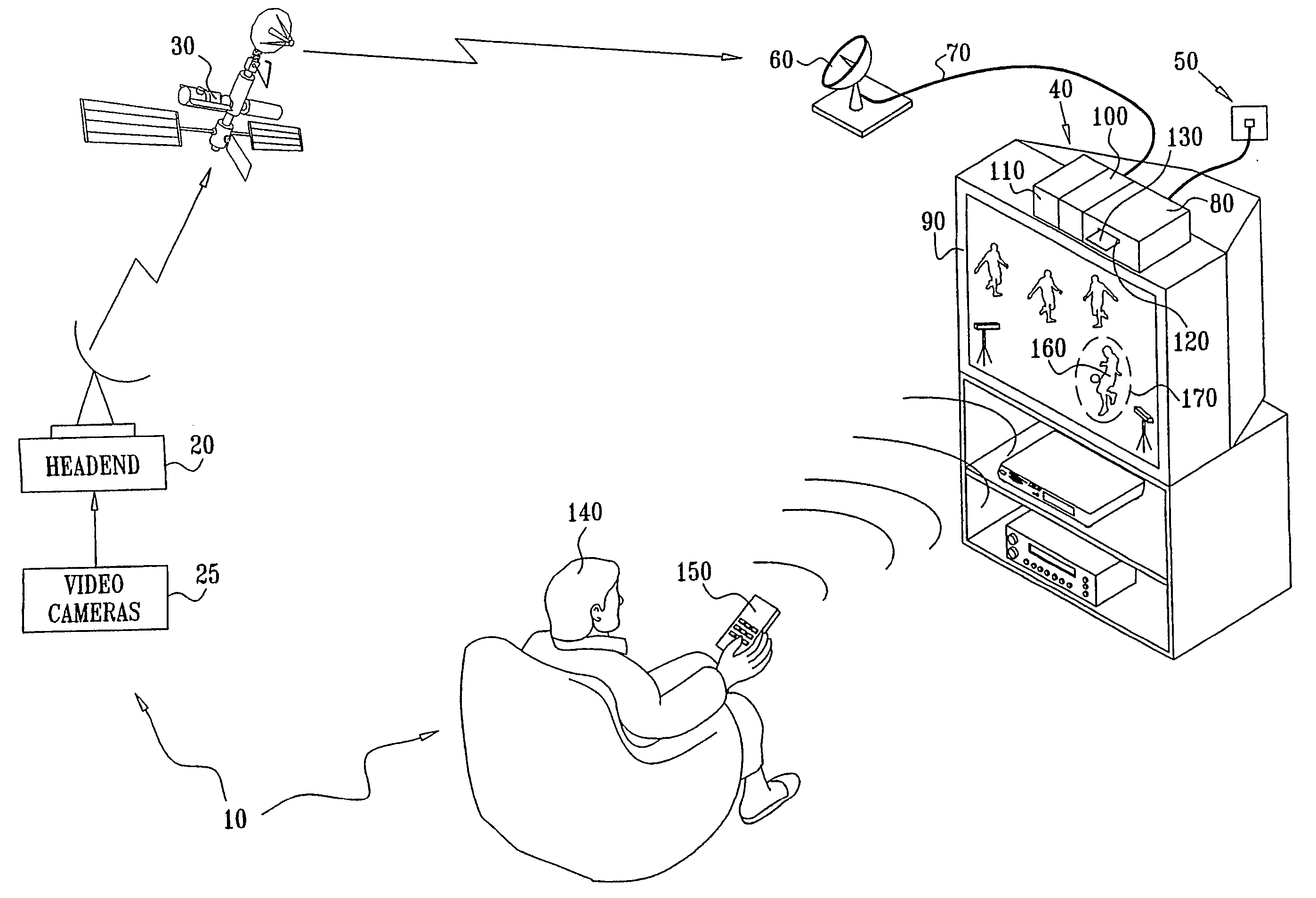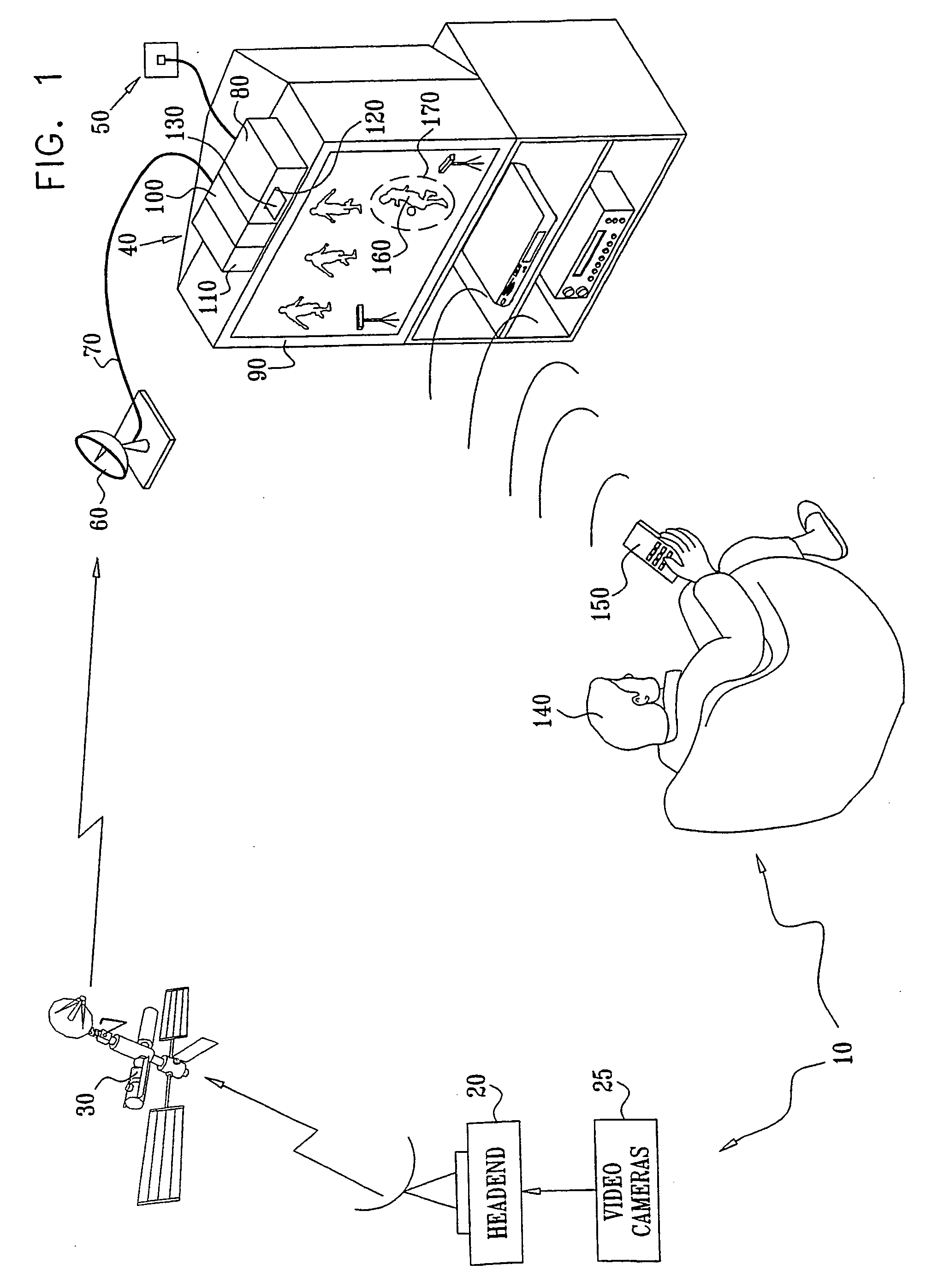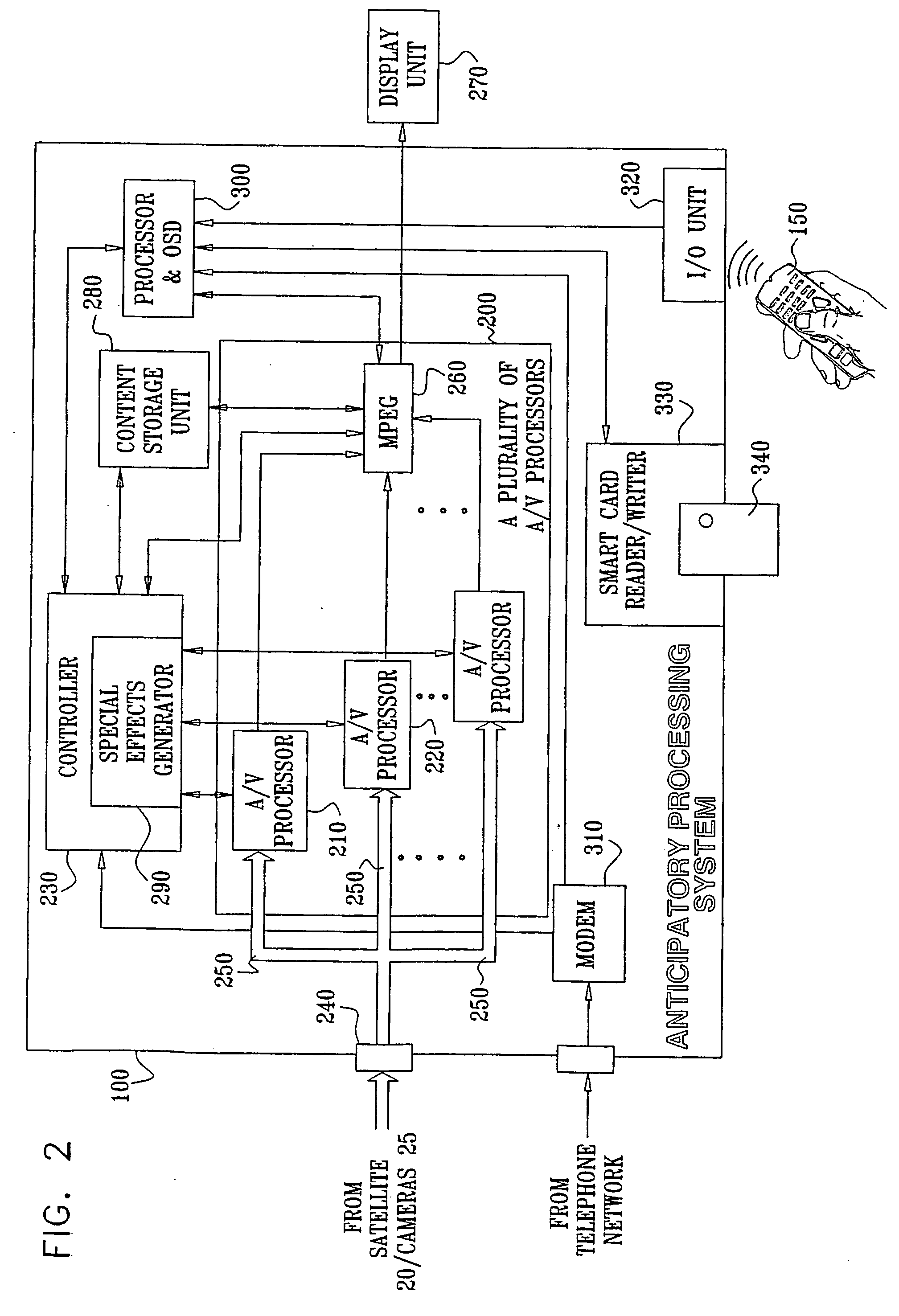Interactive broadcast system
- Summary
- Abstract
- Description
- Claims
- Application Information
AI Technical Summary
Benefits of technology
Problems solved by technology
Method used
Image
Examples
Embodiment Construction
[0093] Reference is now made to FIG. 1 which is a simplified partly pictorial partly block diagram illustration of a preferred implementation of an interactive broadcast system 10 constructed and operative in accordance with a preferred embodiment of the present invention.
[0094] The interactive broadcast system 10 preferably includes a mass-media communication system which provides to a plurality of subscribers at least one of the following: television programming including pay and / or non-pay television programming; multimedia information; audio programs; data; games; and information from computer based networks such as the Internet.
[0095] The system 10 may be implemented via one-way or two-way communication networks that may include at least one of the following: a satellite based communication network; a cable or a CATV (Community Antenna Television) based communication network; a conventional terrestrial broadcast television network; a telephone based communication network; and...
PUM
 Login to View More
Login to View More Abstract
Description
Claims
Application Information
 Login to View More
Login to View More - R&D
- Intellectual Property
- Life Sciences
- Materials
- Tech Scout
- Unparalleled Data Quality
- Higher Quality Content
- 60% Fewer Hallucinations
Browse by: Latest US Patents, China's latest patents, Technical Efficacy Thesaurus, Application Domain, Technology Topic, Popular Technical Reports.
© 2025 PatSnap. All rights reserved.Legal|Privacy policy|Modern Slavery Act Transparency Statement|Sitemap|About US| Contact US: help@patsnap.com



